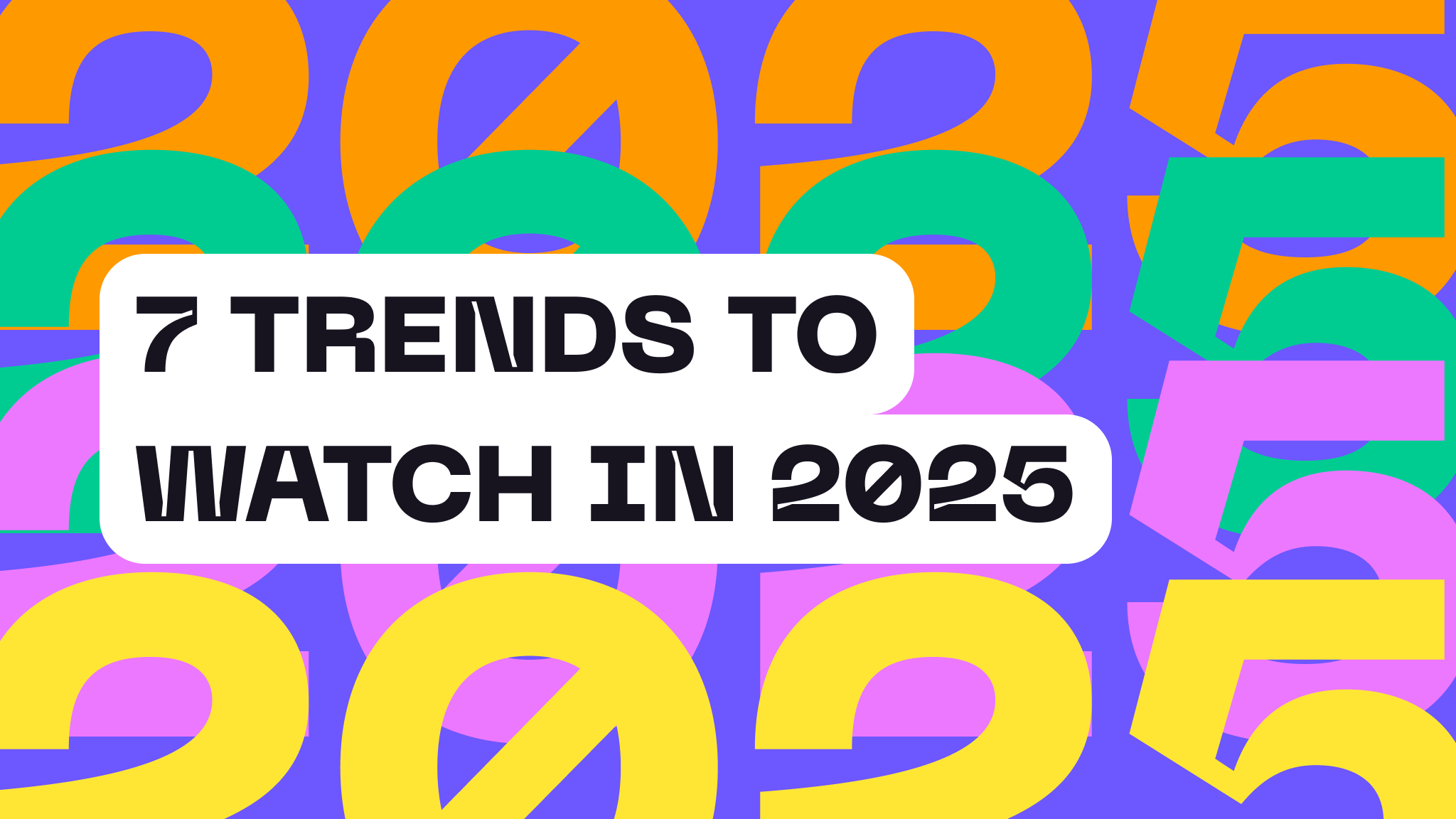Back to blog

7 Web Development Trends to Watch in 2025
Remember back in 2010 when responsive design emerged as the biggest trend in web development? It was followed by the rise of single-page applications (SPAs), then Progressive Web Apps (PWAs), and more recently, Web 3.0.
Similarly, the trends for 2025 will empower developers to build faster, more flexible, and user-centered applications. So our team has identified seven transformative trends that will reshape web development — with tools like Pinata leading the charge in optimizing and streamlining these advancements.
1. AI-driven development and testing
AI in software development isn’t new. In fact, the use of AI-backed coding has increased 70% since 2023. We expect that trend to continue into 2025, with 76% of developers actively using or planning to use AI for coding.
The reason? Speed.
As software becomes more complex and economic pressures demand faster delivery with fewer resources, automation is no longer optional, it’s essential.
AI can analyze, code, test, and debug at a pace no human team can match. That’s why tools like GitHub Copilot, Cursor, V0.dev, Testim, and Snyk are becoming increasingly popular among developers around the world. With AI handling the repetitive and time-consuming work, teams can focus on creativity and problem-solving. But the key to unlocking AI’s potential lies in choosing the right tools.
Tools for AI-powered development
AI tools will help you catch issues early and ensure smooth, error-free workflows. This means replacing manual code reviews with AI-driven static analysis tools, swapping traditional test scripts with automated testing platforms like Testim, and using tools like Snyk to scan dependencies in real-time instead of relying on periodic manual scans.
Here’s what we recommend:
- Coding: GitHub Copilot or Cursor work great for smart code suggestions. These tools analyze your codebase and provide real-time recommendations to speed up development and reduce errors. GitHub Copilot integrates with popular editors like VS Code, while Cursor enhances productivity with its specialized features for navigating and modifying code.
- Testing: Tools like Testim or Mabl are best for automating QA. Testim uses AI to create, manage, and run automated tests that adapt to code changes, and Mabl focuses on continuous testing with easy-to-use tools that integrate with CI/CD pipelines. Both tools help teams catch bugs earlier in the development process.
- Debugging: ChatDBG or Snyk can help you quickly identify and fix vulnerabilities. ChatDBG uses AI to provide clear, step-by-step explanations and solutions for coding errors, and Snyk identifies and fixes security vulnerabilities in real-time.
How Pinata supports developers with AI-powered documentation
Pinata is ready for this AI-driven future. In 2025, our AI-powered documentation will redefine how developers interact with technical resources. We offer a condensed, AI-friendly version of our full documentation, optimized for integration with intelligent coding assistants like Cursor, Zed, and large language models (LLMs).
This streamlined documentation enables developers to access precise, context-aware information directly within their coding environment. Instead of sifting through lengthy manuals or navigating multiple web pages, developers can rely on AI to retrieve and deliver relevant details from Pinata’s APIs and services in real-time. Whether you’re debugging, integrating, or exploring new features, Pinata’s AI-powered documentation will give you the answers you need.
Using AI to improve coding and testing efficiency will also give developers more time to serve users looking for personalized content.
2. Personalized content + recommendations with machine learning
The vast majority of businesses (92%) already use machine learning (ML) for personalization, including major players like Amazon, Netflix, and Spotify. These companies keep users hooked by delivering highly personalized recommendations. As a result, users expect this level of precision on all apps — and they notice when it’s missing.
In 2025, we will see more companies refining their systems or adopting ML for the first time, making personalized content powered by ML the norm instead of a competitive edge.
How to use ML for personalization
Real-time personalization adds complexity and demands robust pipelines and fast processing to respond instantly to user behavior. Building these systems requires the right ML models, tools, and infrastructure.
However, skip building from scratch. Instead, use pre-trained models with TensorFlow, PyTorch, or libraries like Surprise and LensKit. Tools like AWS Personalize or Google Recommendations AI provide ready-made, scalable recommendation systems. And, for real-time personalization, use Apache Kafka or AWS Kinesis to process and stream data instantly.
Here’s how developers can get started:
- Collaborative filtering: Build recommendation systems based on user behavior (e.g., “people who bought this also bought that”).
- Content-based filtering: Recommend items similar to what users already like (e.g., movies in the same genre).
- Hybrid models: Combine both for more accurate results.
- Clustering algorithms: Group users into segments with shared traits for targeted recommendations.
How Pinata uses ML to safeguard users
Pinata uses ML too, although not for personalization. Our in-house ML model ensures user safety by scanning uploaded HTML content for phishing schemes. This allows us to detect potentially malicious sites before they become accessible to users.
Additionally, Pinata’s platform supports the backend workflows that power ML personalization by providing:
- Efficient file storage and delivery: Optimize assets for real-time personalization with our Files API and global CDN.
- Scalability and reliability: Handle fluctuating traffic demands without missing a beat.
- Streamlined media management: Simplify how you store and serve content for dynamic user experiences.
3. Cross-platform and progressive web apps
In 2023, the Progressive Web Apps (PWAs) market was valued at $1.3 billion and is set to grow more than 26% annually through 2032. The efficiency and accessibility offered by these apps are the driving forces behind this trend.
PWAs blur the line between websites and native apps by providing a seamless, app-like experience across devices without requiring app store downloads. This makes them a cost-effective alternative to traditional native apps, especially for businesses looking to reduce development and maintenance costs while reaching more users.
PWAs also enhance performance because they work offline or in low-connectivity scenarios. Improved discoverability through SEO and scalability across devices further simplifies updates, making them a powerful tool for growing user bases.
Best practices for building high-performing PWAs
Building a successful PWA requires careful planning and execution. Developers must optimize assets for faster load times, ensure offline functionality, and design with a mobile-first approach to meet user expectations for performance and usability.
Here’s what we recommend for developers working on PWAs:
- Implement service workers: Service workers are scripts that run in the background of a web application, enabling features like offline functionality, background syncing, and push notifications by intercepting and caching network requests. Use "cache-first" strategies for static assets and "network-first" for frequently updated data.
- Optimize media and assets: Reduce image sizes, use lazy loading, and compress JavaScript to boost performance.
- Design with a mobile-first approach: Use responsive CSS techniques like Flexbox/Grid to ensure usability on all devices.
- Use the web app manifest: Add metadata to define the app’s behavior and appearance.
- Create a standalone experience: Make PWAs feel like native apps with full-screen modes and custom splash screens.
How Pinata powers PWAs with speed and reliability
Pinata enables developers to build faster, more reliable PWAs by optimizing asset delivery. Our Files API speeds up access to critical assets and we offer built-in image optimization to reduce load times. Our CDN delivers content globally and with minimal latency, while our infrastructure handles fluctuating traffic effortlessly, ensuring a smooth experience for users.
In 2022, we built a progressive web app hosted entirely with Pinata’s IPFS infrastructure. By using our Files API and global CDN, we ensured quick and efficient asset delivery. The project showcased Pinata’s ability to support PWAs with speed, reliability, and scalability.
4. Wider adoption of serverless architecture
Serverless architecture is projected to become a $22 billion market by 2025, with an annual growth rate of 23.3%. This growth trajectory is due to the rising demand for scalable, cost-effective solutions that eliminate the need for managing infrastructure.
By offloading server management to cloud providers, developers can focus entirely on writing code, driving faster innovation and better agility. Serverless architecture helps them do exactly that.
With platforms like Vercel and Firebase leading the charge, businesses of all sizes are embracing serverless as the go-to strategy for modern application development.
How to embrace the serverless mindset
The shift to serverless demands a new way of thinking, though. To embrace serverless architecture effectively, you need to:
- Adopt microservices and Functions-as-a-Service (FaaS): Break your application into smaller, independent functions that scale automatically. Platforms like AWS Lambda or Google Cloud Functions are excellent starting points.
- Minimize dependencies: Keep your functions lightweight by using only essential libraries and packages.
- Use cloud-native databases: For efficient data handling, opt for scalable options like AWS DynamoDB, Firebase Realtime Database, or Google Firestore.
- Store files and assets smartly: Offload static file storage to specialized tools like Pinata for optimized performance. Hot Swaps allow you to update IPFS-hosted content dynamically without changing the Content Identifier (CID).
How Pinata supports serverless development with scalable solutions
Pinata’s infrastructure simplifies managing file storage and delivery with scalable, developer-friendly tools that integrate effortlessly into serverless environments.
We complement our serverless architecture with tools tailored for modern development workflows and storage solutions designed with flexibility and simplicity in mind:
- Files API: A serverless solution designed for effortless file storage and delivery.
- Developer-friendly integration: An easy way to incorporate Pinata into your serverless workflow for seamless, scalable operations.
- Enhanced security and reliability: Protection for your assets ensures they’re always available.
- Cost-efficiency: Our model ensures that you only pay for what you use.
5. Sustainable web development
In a 2024 report by the World Economic Forum, 52% of executives stated that their investments in sustainability are likely to increase over the next year. With the growing public focus on environmental issues, we expect that data to prove out as companies prioritize eco-friendly practices, including optimized website performance and green hosting options.
For developers, this means rethinking how websites and web applications are built and delivered. Adopting sustainable practices will also improve your bottom line, as faster sites lead to better user engagement and reduced operational costs.
Tips for creating eco-friendly web applications
Optimized code, efficient asset delivery, and sustainable hosting solutions will help you build digital products that are both eco-friendly and high-performing. Here’s how to do it:
- Optimize assets: Compress and optimize images, bundle and minify code, and use efficient file formats to reduce data transfer.
- Use CDNs and caching: Use content delivery networks (CDNs) and browser caching to reduce server load and improve delivery speed.
- Reduce API calls: Optimize API usage to minimize unnecessary requests, saving bandwidth and energy.
- Enable asynchronous loading: Load non-essential elements asynchronously to prioritize critical content and improve performance.
- Track energy use: Use tools like Website Carbon or EcoPing to monitor and reduce your projects’ energy consumption.
Pinata’s role in building a greener digital future
Pinata supports sustainable web development by helping developers reduce energy use and optimize performance through features like image compression for minimized data transfer, efficient file delivery via a global CDN, and energy-efficient content management. By integrating Pinata into your workflow, you can build greener, faster, and more user-friendly applications.
Pinata’s support for decentralized technologies like IPFS contributes to tackling global challenges such as climate change. For example, decentralized systems enhance transparency and traceability in supply chains, which helps reduce food waste. Pinata empowers developers to use IPFS for such initiatives and offers tools to store and manage data efficiently. In 2025, we remain dedicated to driving sustainable innovation for developers worldwide.
6. Decoupled architectures and headless CMS for flexibility
Decoupled architectures and headless CMS setups are rapidly transforming web development. By 2025, 57% of businesses will have adopted a headless approach, with an additional 39% evaluating these solutions. The reason for this surge? The need for flexibility and scalability.
Both serverless and decoupled architectures emphasize scalability and flexibility, but their approaches differ in how they handle backend and infrastructure management. In a decoupled setup, the frontend and backend operate independently, allowing developers to customize each layer without constraints. This independence unlocks unparalleled speed in development, enabling businesses to innovate faster while maintaining a consistent user experience across platforms.
This trend also enables developers to deliver personalized, dynamic content more efficiently. That’s because decoupled architectures allow developers to use APIs to fetch and deliver content dynamically, enabling real-time updates and tailoring the content to specific user preferences or behaviors without redeploying or altering the core application.
How to set up decoupled architectures and headless CMS frameworks
For developers, decoupled architectures and headless CMS frameworks like JAMstack offer a new level of freedom. The modular design reduces dependency on monolithic systems and allows for smoother updates and easier scaling.
Here’s how to set up decoupled architectures or headless CMS frameworks:
- Choose a frontend framework: Pick tools like Next.js, Gatsby, or Nuxt.js to build fast, dynamic interfaces. These frameworks prioritize performance and SEO while enabling integration with APIs for headless architectures.
- Select a headless CMS: Use platforms like Contentful, Strapi, Builder, or Sanity to manage backend content. They provide API-first content delivery and allow flexibility for frontend frameworks while giving non-technical users a visual editor for easily updating content — reducing burden on the dev team for smaller requests.
- Design content models: Organize data structures to make APIs more effective and flexible. This means your content is well-structured, reusable, and easy to query.
How Pinata's serverless solutions enhance decoupled architectures
Pinata enhances decoupled architectures with its serverless Files API, streamlining media asset management through efficient storage, image compression, and fast global delivery. We ensure scalability for fluctuating workloads, security for sensitive files, and integration between frontend and backend systems.
In addition to uploads, Pinata's IPFS gateway infrastructure and its Files API gateway infrastructure is 100% serverless, allowing it to scale to any size while remaining fast and stable.
7. Lightweight frameworks and optimized content delivery
As user expectations for fast, seamless web experiences grow, companies are increasingly turning to lightweight frameworks and optimized content delivery. By 2025, frameworks like Astro and Svelte will take center stage due to their ability to create high-performing applications with minimal resource consumption.
Astro’s zero JavaScript by default and Svelte’s build-time compilation deliver lightning-fast page loads and improved runtime performance. These frameworks help developers meet modern demands while keeping energy use low. So using lightweight frameworks also complements sustainable web development.
Developers will also adopt lightweight frameworks and refine content delivery strategies to achieve faster load times, improve user experience, boost SEO rankings, and increase conversion rates. But the challenge lies in efficiently managing and delivering assets, especially as applications scale.
How to optimize content delivery with lightweight frameworks
Here’s how you can embrace lightweight frameworks and optimize content delivery:
- Choose the right framework: Use Astro for static-heavy sites and Svelte for dynamic, interactive applications. Both frameworks minimize resource consumption while maximizing performance.
- Implement lazy loading: Load images and assets only when needed to speed up initial page loads.
- Optimize images and videos: Compress media files without sacrificing quality to reduce data transfer.
- Use CDNs: Use CDNs to deliver assets closer to users, reducing latency and load times.
- Minify code: Remove unnecessary characters and spaces from HTML, CSS, and JavaScript to improve load speeds.
How Pinata boosts lightweight frameworks with optimized asset delivery
Pinata complements lightweight frameworks like Astro and Svelte by streamlining asset delivery with its Files API. It offers optimized image delivery through automatic compression, fast and reliable file delivery via a global CDN, and simplified asset management to keep workflows efficient.
Pinata also enhances the performance of lightweight frameworks by using IPFS pinning and dedicated gateways for distributed file storage and retrieval. These features deliver assets quickly and maintain high availability, even under heavy traffic in both conventional and decentralized environments.
With Pinata's tools, developers can optimize data accessibility, maintain user experiences, and reduce infrastructure complexity. This makes Pinata an ideal choice for modern web projects using Astro, Svelte, and other lightweight frameworks.
Build smarter with Pinata
From enhancing PWAs with real-time updates to supporting sustainable web practices and decoupled architectures, Pinata is the go-to solution for modern developers.
Whether you’re using lightweight frameworks, adopting serverless architecture, or developing personalized, dynamic applications, Pinata provides the infrastructure, optimizes performance, and reduces complexity — so you can get back to building your app.
Ready to streamline your web development workflows and embrace the future? Try Pinata for free today and see how it can revolutionize your projects.

